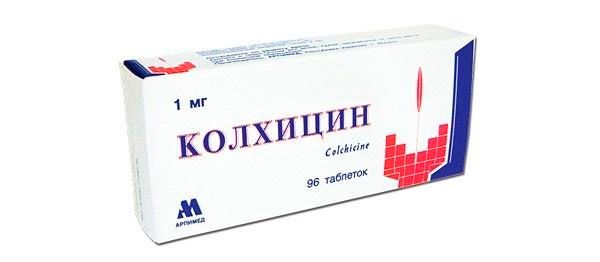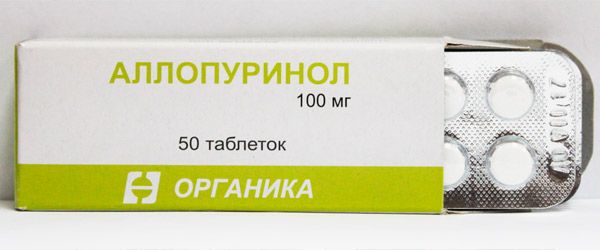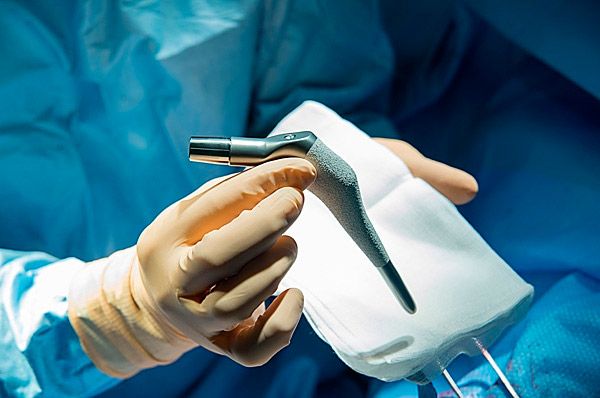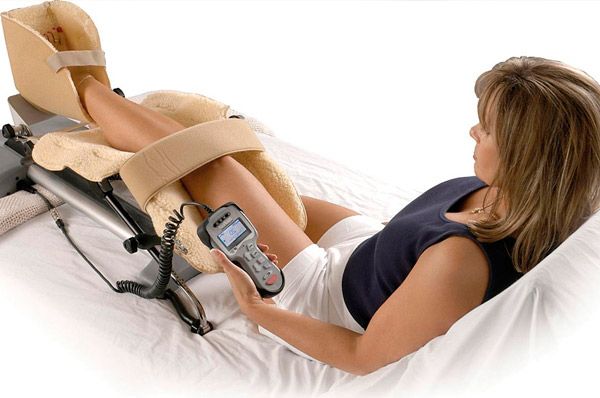Medical expert of the article
New publications
Overview of gout treatments
Last reviewed: 06.07.2025

All iLive content is medically reviewed or fact checked to ensure as much factual accuracy as possible.
We have strict sourcing guidelines and only link to reputable media sites, academic research institutions and, whenever possible, medically peer reviewed studies. Note that the numbers in parentheses ([1], [2], etc.) are clickable links to these studies.
If you feel that any of our content is inaccurate, out-of-date, or otherwise questionable, please select it and press Ctrl + Enter.
Gout, a chronic joint disease with periodic exacerbations of inflammation and severe pain caused by the deposition of uric acid salts or its crystals in the articular cartilage, affects at least 1% of the population in different countries: in Germany – 1.4%, in the USA and Japan – almost 4%.
Why does gout treatment remain a pressing issue in modern clinical medicine? Because the pathogenesis of this disease is metabolic, and doctors note its spread and “rejuvenation”. Thus, the British Society of Rheumatology (BSR) reports that over the past 10 years, gout diagnoses among middle-aged Englishmen have doubled, increasing the level of musculoskeletal disability. And there are concerns that gout will affect an increasing number of people.
 [ 1 ], [ 2 ], [ 3 ], [ 4 ], [ 5 ], [ 6 ], [ 7 ], [ 8 ], [ 9 ]
[ 1 ], [ 2 ], [ 3 ], [ 4 ], [ 5 ], [ 6 ], [ 7 ], [ 8 ], [ 9 ]
Treatment methods for gout
There is a treatment protocol for this pathology approved by the European League Against Rheumatism (EULAR), the American College of Rheumatology (ARC) and other international and national medical organizations in this field.
Standardized clinical treatments include both pharmacological agents to relieve inflammation, pain, and lower blood uric acid levels, and non-drug therapies.
Let us recall that the etiology of this disease is associated with a violation of the metabolism of nitrogenous substances (purines) and an abnormally high concentration of uric acid in the blood (hyperuricemia). This provokes the release of monosodium urate salt not only into the joints, but also into soft tissues (in the form of tophi). The disease develops either due to an increase in the synthesis of uric acid, or due to its insufficient excretion by the kidneys.
The protocol's recommendations for the treatment of gout include non-pharmacological measures:
- taking into account endogenous factors in the development of pathology, patients are recommended a Diet for gout or a Diet for gouty arthritis;
- recommendations are given for lifestyle changes, including weight loss, exercise, quitting smoking, and drinking enough fluids;
- An examination is proposed to identify metabolic syndrome (adipositosis, hypertriglyceridemia, hypercholesterolemia, type 2 diabetes mellitus) and renal failure that aggravate hyperuricemia.
The protocol also provides for drug treatment of gout. Since this disease manifests itself as arthritis with episodes of acute inflammation in the synovial membrane of the joints, accompanied by their swelling and pain, the treatment of gout (acute gouty arthritis) is aimed at relieving these symptoms and combating hyperuricemia.
Surgical treatment of gout, practiced today, consists of removing tophi, as well as restoring the destroyed articular cartilage. Physiotherapy and spa treatment of gout are used.
Gout Treatments: Recommended Medicines
Leading experts recommend the following medications for the treatment of gout:
- NSAIDs (non-steroidal anti-inflammatory drugs): Ibuprofen (Ibuprom, Ibuprof, Ibusan, etc.), Diclofenac (Naklofen, Olfen), Indomethacin (Indocin), Naproxen, Celecoxib, etc.;
- corticosteroids (Prednisolone, Methylprednisolone, Dexamethasone, Triamcinolone, etc.);
- Colchicine (Colcris);
- Allopurinol (Ziloprim, Aloprim, Allozim, Allohexal, Purinol, Sanfipurol, Milurit and other trade names);
- Probenecid (Benemid, Benecid, Probalan).
The use of these drugs represents modern treatment for gout.
Acetylsalicylic acid (Aspirin), which is related to the NSAID group, can relieve pain and reduce fever, act against inflammation and thin the blood. However, Aspirin is much inferior to NSAIDs in terms of anti-inflammatory effectiveness. In addition, the treatment of gout with Aspirin is not included in modern medical standards of anti-gout therapy, since taking this drug in a low dose reduces the excretion of uric acid by the kidneys and increases its level in the blood serum.
Inflammation, pain and treatment of swelling in gout are carried out with modern non-steroidal anti-inflammatory drugs (listed above). In acute gout attacks, they are taken orally for 2-7 days (daily dose up to 0.2 g); Indomethacin, Ibuprofen and Diclofenac are considered the most effective. It should be remembered that regular use of NSAIDs can cause bronchial spasms, stomach ulcers and gastrointestinal bleeding. Therefore, patients should strictly adhere to the dosage and duration of taking drugs of this group prescribed by the doctor.
Oral corticosteroids are an alternative when NSAIDs are contraindicated or intolerant. Steroids are considered a more appropriate treatment when multiple joints are affected. Injections of Methylprednisolone into the affected joint relieve pain and reduce inflammation. However, their long-term use has serious side effects, including osteoporosis, high blood pressure, and cataract development.
Treatment of gout with Fulflex is not provided for by clinical standards, moreover, Fulflex is not a medicine, but a dietary supplement.
Treatment of gout with Colchicine
Colchicine is a drug made from the poisonous alkaloid of the autumn crocus plant (Colchicum autumnale); as of 2009, the only brand of colchicine approved by the FDA for the treatment of gout is Colcrys.
Colchicine (Colchicum-dispert) is not a specific drug and can be used for familial Mediterranean fever, pericarditis, Behcet's disease and atrial fibrillation. Its use in gout is associated with the effect of this alkaloid on the formation of urate crystals in the body. Relief of pain syndrome and treatment of edema in gout are also included in the list of indications for this drug.

Treatment of gout with Colchicine involves taking it orally (1.2 mg) no later than 24 hours after the onset of symptoms of a gout attack, and an hour after the first dose, another 0.6 mg should be taken. A long-term treatment regimen with Colchicine (for 1-2 months) - 0.6 mg 1-2 times a day - can prevent the next attack of gout.
It should be borne in mind that the treatment of gout with Colchicine is strictly contraindicated in liver or kidney diseases, heart pathologies, stomach ulcers, ulcerative colitis, Crohn's disease. Side effects of Colchicine include severe vomiting and diarrhea, muscle pain and weakness, numbness of the fingers, flu symptoms, the appearance of blood in the urine and decreased diuresis. In addition, it should be remembered that the simultaneous use of this drug with non-steroidal anti-inflammatory drugs increases the risk of a decrease in the number of platelets and leukocytes in the blood.
Colchicine has been the subject of much controversy due to its high risk of cumulative toxicity, which can lead not only to irreversible neuromyopathy but also to hypercapnic respiratory failure and death.
In domestic clinical practice, such drugs as Butadion, Phenylbutazone and Reopyrin are considered an alternative to Colchicine; they help relieve inflammation and stimulate the excretion of urate salts.
Treatment of gout with Allopurinol
If too much uric acid is produced in the body (and this is confirmed by appropriate tests), it is necessary to carry out therapy to reduce the intensity of this process (treatment of gout with Allopurinol).
Caution: Do not take uric acid lowering medications during a gout attack! Also avoid taking them simultaneously with NSAIDs.
Treatment of gout with Allopurinol reduces the synthesis of uric acid by blocking the enzyme xanthine oxidase, which ensures the process of purine utilization and the formation of uric acid in the body. Allopurinol is most often used in the long-term treatment of gout in elderly patients: its standard daily dosage is 0.2-0.3 g, and in severe cases it can be increased to 0.8 g (FDA recommendation). But after normalization of uric acid content in the blood plasma (<360 μmol/l), the daily dose of the drug should not exceed 0.1 g.

The drug is used with regular monitoring of the level of uric acid in the blood and mandatory consumption of a sufficient amount of fluid to ensure an optimal level of urine excreted (within two liters per day).
If the kidneys are unable to remove excess uric acid from the body (in hyperuricemia), alternative uricosuric agents are prescribed: Probenecid, Sulfapyrazone, Benzbromarone, etc. Preference is given to Probenecid, prescribed in a daily dose of 0.5-2 g.
Treatment of tophi in gout is also carried out with Allopupinol or Probenecid, long-term use of which (six months or more) helps tophi to gradually soften and disappear.
New in the treatment of gout
Today, new treatments for gout include drugs that expand therapeutic options in the fight against excess uric acid. Uloric (Febuxostat), manufactured by Takeda Pharmaceuticals (USA), like Allopurinol, inhibits xanthine oxidase and is prescribed for elevated blood urate levels (40-80 mg per day, in one dose, treatment course - up to 14 days). According to clinical randomized trials (involving 2757 patients with hyperuricemia and gout), this drug is more effective (reduction in serum urate concentration in 53% of patients) than Allopurinol (reduction in uric acid in 21% of patients).
Another new drug for the treatment of gout in Europeans is the drug Krystexxa (Pegloticase) for intravenous infusions (every two weeks); approved in the USA in 2010, and in early 2013, the European Medicines Agency (EMA) issued permission for its use. This is an option for patients who do not respond to other drugs or do not tolerate them. Pegloticase is a recombinant porcine uricase (a specific enzyme of uric acid), which promotes the oxidation of uric acid into highly soluble allantoin and thereby reduces its serum level. This is certainly useful for gouty nodes, but the new drug has too many side effects, including the threat of anaphylactic shock and infusion reactions when administering the drug.
And the elucidation of the role of elevated levels of the inflammatory mediator interleukin IL-1β in joint inflammation in gout and rheumatoid arthritis led to the creation of the drug Anakinra (Anakinra, Kineret), which affects the inflammatory process by blocking the cellular receptors of this immune cytokine.
Treatment of gout according to Bolotov
Among the various folk remedies for treating gout - using kerosene, laundry soap, bee venom, hot foot baths with herbal decoctions - many are interested in the treatment of gout according to Bolotov.
Of all the variety of ways to improve health and prolong life generated by 85-year-old electrical engineer Boris Bolotov, it is worth citing, for example, his original recipe for removing salts from the body. To do this, you need to eat about 100 g of leaves of the medicinal plant coltsfoot every day for at least two months - crush them and mix them with table salt. You need to lubricate inflamed joints with this mixture and warm them up with a heating pad. At the same time, you need to eat more pickled and salted vegetables.
As is known, coltsfoot decoction is an expectorant and is also used for inflammatory processes in the gastrointestinal tract. Maybe it's all about the inulin contained in the leaves of this plant, which activates the intestinal microflora and thereby improves the general condition of the body?
The recommendations for treating gout "according to Bolotov" are not limited to this: you should drink decoctions of coltsfoot, meadowsweet, knotweed, and horsetail (the last two are diuretics). And oxidize the body by drinking as many fermented drinks as possible from bearberry leaves (a well-known diuretic), viburnum berries, watermelon and birch sap, horseradish roots, and parsley. In addition, the removal of salts is facilitated by sweating during a weekly steam bath, after which the body should be rubbed with vinegar infused with sage leaves.
Local remedies for gout
External gout treatments – ointments and gels – are intended to relieve pain and reduce hyperemia and swelling of the joints. Most often, the effect is given by means of Diclofenac, Ibuprofen, Piroxicam, as well as ointments with Dimexide (Capsicum and Remisid). For more details, see – Ointment for joint pain.
Treatment with Dimexide provides an analgesic and anti-inflammatory effect during gout attacks. This dermatotropic agent is used in the form of compresses, diluted with water in a 1:1 ratio. The compress (covered with polyethylene) is kept on the joint for 15-20 minutes; the course of procedures is daily for one to two weeks. Dimexide has contraindications, and such compresses cannot be done if there are problems with the heart, kidneys or liver.
You can make compresses with warm bischofite or medical bile; applications from a mixture of clay, table salt and water with the addition of iodine (10 drops). It is recommended to lubricate inflamed joints with an alcohol tincture of lilac flowers or aconite roots. These tinctures are also used for home treatment of swelling in gout - by applying them to the skin over the swollen joints and then lightly rubbing them in.
Surgical treatment of gout
In gout, surgical treatment is performed in the following cases:
- development of destructive arthritis associated with chronic gout;
- in case of tophi of significant size (uric acid nodules are removed, as they can open up and cause ulceration and inflammation of the surrounding tissues);
- with the destruction of joints and the “fusion” of their synovial membranes;
- in case of complete and irreversible destruction of all joint structures and damage to the hyaline cartilage; replacement with artificial materials is performed - endoprosthetics, arthrodesis, arthroplasty.

According to the American Academy of Orthopaedic Surgeons (AAOS), 10% of patients with gout have tophi, which are best removed before they damage the skin, tendons, ligaments, and skeletal structures. And orthopedists consider surgical treatment of gout justified when: tophi disfigure the limbs, they are painful, urate deposits limit tendon function, the presence of tophi threatens skin necrosis, tophi compress nerve endings and disrupt innervation.
Other possible surgical interventions for gout include: joint resection, curettage or partial resection of tendons (may help preserve joint function), and finger amputation.
Physiotherapy for gout
Hardware physiotherapeutic procedures that can be used for gout during an exacerbation include infrared and ultraviolet irradiation of joints, UHF and iontophoresis with corticosteroids.
After the relief of acute pain – in order to improve microcirculation and metabolism in joint tissues – ultrasound treatment and laser therapy (with a laser with a power of no more than 20 mW) are practiced. There is also a BioFlex cold laser therapy system.
Laser treatment of gout is used when the disease manifests itself in the form of microcrystalline arthropathies, common among elderly patients who are more vulnerable to the side effects of drugs. The effectiveness of laser therapy for pain relief is combined with a complete absence of side effects.

In many countries, including ours, various "home" physiotherapy devices are offered for the treatment of gout. As a rule, these are compact devices whose operating principle is based on the effect of an alternating magnetic field on tissues or on microvibrations. Among the latter are the Vitafon device and its analogue Fonovit (Russian production).
According to the developers and manufacturers of this device, in the presence of pathology, tissue cells experience a deficiency of natural "biological vibrations" generated by the contraction of muscle cells. The method of alternative physiotherapy for joint diseases - microvibration therapy or phonotherapy, as indicated in the instructions, helps to reduce pain in the spine and joints after injuries, surgical treatment, etc. However, the treatment of gout with Vitafon is not listed in the list of diseases for which this device should be used.
Treatment of gout in sanatoriums
Experts note that treatment of gout in sanatoriums – balneology, peloidotherapy (mud therapy), thalassotherapy – is recommended only several months after an exacerbation of the disease.
An important factor in the effectiveness of medical procedures during spa treatment is the general relaxation and positive attitude of patients. Although it is not yet possible to completely cure gout, such balneological procedures as carbon dioxide mineral, sulphide-hydrogen sulphide, radon, chloride-sodium baths help improve blood and lymph flow in the affected tissues and activate metabolic processes, which has a positive effect on joint mobility.
This is also facilitated by the use of therapeutic mud and sea water. There are many spa therapy methods, and doctors, combining them, choose the most suitable for each patient: hydro and thermotherapy, magnetic therapy, diadynamic therapy, therapeutic massage, kinesitherapy, etc.
Gout treatment is possible in sanatoriums and resorts in Berdyansk, where therapeutic muds are located in the estuary on the Berdyansk Spit; near Odessa - on the Kulnitsky estuary, in the Kherson region - on Sivash. In Transcarpathia, gout is treated in the sanatoriums "Sinyak", "Beregovo", "Bozhava" and at least two dozen other resort institutions.
Treatment of gout in Crimea is in sanatoriums on the Kalamitsky Gulf in Yevpatoria, as well as in Saki on the salt lake, where peloidotherapy is carried out using sulphide silt mud and brine.
Treatment of gout with sulphide mud can be obtained in Pomorie near Burgas (Bulgaria), and the resort of Polanica-Zdroj in Poland is famous for its peat mud.
Gout treatment abroad
Judging by the latest publications of the Ukrainian Rheumatology Journal, domestic specialists adhere to the protocol and conduct modern treatment of gout, prescribing all the necessary examinations and medications.
However, many consider treatment of gout abroad to be more effective…
Treatment of gout in Israel can be attractive, since doctors in this country are proficient in almost all modern methods, and Israeli clinics are equipped with the latest medical technology.
The protocol for treating gout includes medication, diet therapy, exercise therapy, ultrasound and shock wave therapy. Blood is purified from uric acid by plasmapheresis hemosorption. Surgical treatment of gout of varying complexity is also performed in Israel.
And, of course, the water and healing mud of the Dead Sea are used – see more details: Joint treatment in Israel.
Rosemary oil has been used to treat gout in Germany for centuries, and locals still use it widely today. They also drink nettle tea, which recent studies have shown actually helps cleanse the body of excess uric acid.
Modern treatment of gout in Germany since 2008 is also carried out according to the recommendations of EULAR and BSR, using the appropriate pharmacological drugs. Although, as rheumatologists of Klinik der Gegenwart (Munich) claim, they have been prescribing urate-lowering therapy with Allopurinol to their patients since 1964. But recently, more and more doctors prefer to prescribe not Allopurinol (the intake of which reduces the level of uric acid in only 24% of patients), but Benzbromarone (92%, respectively) or Probenecid (65%).
The attitude towards patients who are treated for gout in Germany is professional in everything: they will never prescribe any medication without a mandatory check of the glomerular filtration of the kidneys.
Germany is also famous for its homeopathic school, and homeopathic doctors have more than 200 remedies in their arsenal for treating gout.
When choosing gout treatment abroad, you can change direction and turn to oriental medicine – traditional Chinese medicine.
Treatment for gout in China includes acupuncture, herbal remedies, and…bloodletting. If a Chinese person has gout, it means there is something wrong with his zhinye or jingye (body fluid), because this fluid has “absorbed too much waste from food and drink.”
Among the plants that are especially revered for gout are those included in the remedy Si Miao San, which is also well-known in the West: the rhizome of Atractylodes lancea (lanceolate atractylodes), the bark of Phellodendron amurense (Amur cork tree), Colchicum autumnale (meadow saffron or crocus – see Allopurinol above!).
The familiar dandelion is also used to treat gout in China. A decoction of dandelion leaves is drunk to remove uric acid, and fresh leaves are applied to joints to reduce swelling and pain. As for bloodletting, as reported by the Journal of Traditional Chinese Medicine, this method fell out of fashion in the West more than a hundred years ago, but in China it is being used again to relieve severe pain during gout attacks - in combination with Chinese herbs. The results showed that in almost 62% of cases, the patients' condition quickly improved.
Experts have long had no illusions about the reversibility of nitrogen metabolism disorders in the body. Seven years ago, researchers from the MRC Human Genetics Unit at the University of Edinburgh discovered that people with a mutation of the SLC2A gene tend to retain uric acid and accumulate it in the body. And there is a very high probability that they will sooner or later need treatment for gout.

